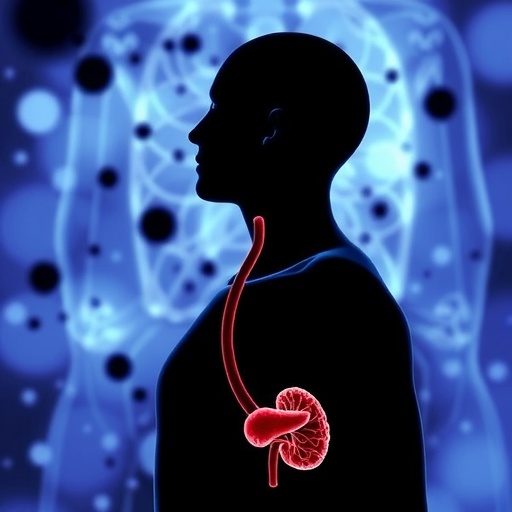A recent breakthrough from the National Cancer Research Centre (CNIO) has unveiled a critical molecular mechanism linking a mutation in the shelterin protein POT1 to the onset of idiopathic pulmonary fibrosis (IPF). This discovery illuminates the pathway by which chromosomal protection goes awry, resulting in fatal lung fibrosis, and opens new doors for personalized therapeutic strategies targeting telomere dysfunction.
Idiopathic pulmonary fibrosis presents as gradual scarring and stiffening of lung tissue, a pathophysiology that progressively impairs respiratory capacity. Despite its severity and fatal prognosis, the molecular underpinnings of IPF have remained largely ambiguous. However, mounting evidence positions telomeres—the protective nucleotide sequences capping the ends of chromosomes—as central players in this disease. This context sets the stage for the CNIO team’s focus on telomere biology, particularly on the consequences of mutations affecting shelterin components.
Telomeres serve as guardians of genomic stability, preventing chromosomes from degrading or fusing improperly. These caps inevitably shorten as cells divide, a normal aging marker, but critical shortening triggers cellular senescence or death, halting tissue regeneration. In the lungs, where cellular renewal is crucial, inadequate telomere maintenance translates into fibrotic tissue accumulation, underpinning IPF’s progressive nature.
The study, spearheaded by Dr. Maria Blasco’s Telomeres and Telomerase Group, centers on a specific mutation in the POT1 gene. POT1 is a core shelterin protein integral to the protection and maintenance of telomeres. This mutation, analogous to one found in human patients suffering from pulmonary fibrosis, disrupts the shelterin complex functionally, compromising the ability of telomerase—the specialized enzyme responsible for elongating telomeres—to repair these chromosomal ends.
Using an experimental mouse model genetically engineered to carry the human-equivalent POT1-L259S mutation, the research reveals a telomerase deficiency-like phenotype. With successive generations, mice exhibit progressive telomere shortening, recapitulating the deleterious molecular signature seen in affected human lung tissue. This compelling phenotype underscores the mutation’s direct causal role in telomere dysfunction and fibrogenesis.
The mechanistic insight provided by these findings is profound. The POT1 mutation hampers telomerase recruitment or activity at the telomeres, effectively halting their elongation and repair. This halting leaves telomeres exposed and dysfunctional, precipitating cellular aging and impaired regenerative capacity specifically in lung epithelial cells. The parallels to direct telomerase mutations in IPF patients suggest that the shelterin complex mutation phenocopies telomerase insufficiency, broadening the understanding of telomere syndromes.
Notably, this is the first documented case where a shelterin protein mutation results in a degenerative pulmonary disease rather than cancer, a divergence from previously characterized POT1 mutations. Historically, POT1 aberrations have been predominantly linked to oncogenic processes involving unchecked cellular proliferation. This dualistic implication underscores telomere biology’s nuanced role in balancing cancer risk against tissue degeneration and aging.
The duality of POT1 mutations exemplifies the tightrope walk of telomere integrity in human pathophysiology. On one hand, insufficient telomere maintenance leads to premature cellular senescence and degenerative diseases like IPF. On the other, hyperactive or dysfunctional telomere regulation can permit malignant transformations. This delicate equilibrium makes telomere-related proteins compelling, albeit complex, targets for therapeutic intervention.
The therapeutic implications of this study are particularly significant. CNIO’s spinoff, Telomere Therapeutics, is already pioneering treatments focused on activating telomerase to counteract tissue degeneration linked to telomere shortening. However, the current findings reveals a critical caveat: blanket telomerase activation may not be efficacious in cases involving shelterin mutations such as POT1-L259S. These mutations block telomere repair despite the presence of telomerase, advocating for more refined, mutation-specific therapeutic approaches.
Moreover, this work highlights the necessity of personalized medicine in addressing telomere syndromes. Understanding the specific molecular lesion—whether it lies in telomerase components or shelterin proteins—can guide the selection or design of appropriate therapeutic modalities, optimizing efficacy and minimizing futile interventions. This approach aligns with broader trends in oncology and genetic diseases, where precision medicine increasingly informs clinical decision-making.
Funded by the European Research Council’s SHELTERINS project, led by Dr. Blasco, this study also contributes to the overarching goal of deciphering shelterin protein functions in cancer and aging. By characterizing mutations across POT1 and other shelterin members, the project aims to disrupt telomere protection selectively in tumor cells, curbing their limitless growth. In parallel, it deepens the understanding of telomere-related degenerative conditions, potentially uniting research efforts towards innovative therapeutic avenues.
The implications of this research extend beyond pulmonary fibrosis, as telomere syndromes encompass a spectrum of diseases marked by telomere dysfunction, including aplastic anemia and various cancer types. Comprehensive dissection of shelterin-telomerase interplay will therefore have a wide-reaching impact on multiple fields of medicine, from regenerative biology to oncology.
In conclusion, the CNIO team’s elucidation of how POT1 mutations incapacitate telomerase-mediated telomere repair marks a pivotal advance in telomere biology. By bridging a critical knowledge gap about the molecular genesis of idiopathic pulmonary fibrosis, this work paves the way for sophisticated, mutation-informed interventions. As research progresses, the hope of transforming telomere syndrome management from palliative care to precise, curative therapies grows ever more tangible.
Subject of Research: Animals
Article Title: Mice carrying the homologous human shelterin POT1-L259S mutation linked to pulmonary fibrosis show a telomerase deficiency-like phenotype with telomere shortening with increasing mouse generations
News Publication Date: 15-Sep-2025
Web References:
Grupo de Telómeros y Telomerasa – Fundación Humanismo y Ciencia
https://www.cnio.es/noticias/noticias-cnio/maria-blasco-y-marisol-soengas-reciben-dos-erc-advanced-grants/
References:
Genes & Development, DOI: 10.1101/gad.352855.125
Image Credits: CNIO
Keywords: Telomeres, Cancer risk, Tumor growth, Malignant transformation, Carcinogenesis, Fibrosis, Tissue regeneration




